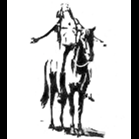typing romanized Thai
-
Recently Browsing 0 members
- No registered users viewing this page.
-
Topics
-
-
Popular Contributors
-
-
Latest posts...
-
31
Tourism Thailand Delays Tourist Entry Fee Amid Travel Concerns
Any international flight I believe. It used to be 500 Baht which you paid when you went through to immigration after check in. Then they scrapped the collection at the airport and put it onto the price of the ticket, however, they also bumped it up to 700 baht as no one would notice. -
174
2025 SSA Form 7162 - "Hello, are you dead yet?" forms.
A person has been able to request replacement SS cards, get your annual tax form, and benefit letters, and do other things from their SSA online acct for a l.....o.....n.....g time----nothing new about that except the current SSA leadership is trying to make it's sound like something brand new. Now if the SSA online acct portal does become available "24/7" then that will be an improvement, something new....and I think it is indeed available 24/7 "now" based on some of my recent weekend testing. And the part about being able to upload docs and manage direct deposit that has also been around for a l....o....n....g time. Unfortunately it does "not" work for those with non-US addresses (like a Thailand address where you patiently wait for your 7162 to arrive). But all these neat options on the SSA online acct will work if you have a US address onfile; if having an international address onfile several of the functions do not work because after clicking them you then go to a screen basically saying Sorry Charlie, No-Can-Do since you have an international address onfile. Been like that for a long time...and still is like that. For example I logged onto my acct a few minutes ago to make some snapshots of what happens when you click on the Upload Documents link....you will end-up being told "no-can-do" for those with an international address on file with SSA. And when going under your Profile to update your Direct Deposit info...like switch it to another bank....once again you can not do it online but are told to contact the SSA due to having an international address onfile. When it comes to what you can do with your SSA online acct a lot depends on whether you have a US or international address onfile. A lot of the recent SSA media releases talking "good stuff" that SSA is doing is stuff that's been available in the SSA online acct for years... trying to take credit for achievements of others from numerous years ago. And as mentioned some of the online capabilities only work if having a US address onfile. Take these the recent SSA press releases where they are patting themselves and-their SSA Director on the back with a BIG grain of salt as some capabilities have been around for a long time although the SSA media releases are trying to package them as something brand new. I just hope the SSA does at some point make all the functions currently available in a person's SSA online acct also "useable/available" to folks with international addresses onfile with SSA. ' SSA online acct Snapshot on 17 July 2025...Upload Documents link has been their for years....however it may not work for you depending on your address on planet Earth. After clicking "Upload Documents" you get below: And let's say you want to update your banking info you get below showing your current direct deposit info....and for those with an international address when you click the "Contract Us" button you are told to call the SSA to update your bank DD info. Or although it doesn't say so, you can contract Manila FBU. After clicking the "contact us" link. -
165
Why do people want to live in Isaan?
Have you tried walking round in circles? 555 -
55
The Expat Paradox: An Appraisal of Westerners in Thailand
Somebody woke up with a bad hangover. -
5
DJ - no charge
Do u have a working permits?The thais who get jealous will contact the police or IMM right away and u will have a huge problem.Doesnt matter if u do this for free.- 1
-

-
-
-
Popular in The Pub



.thumb.jpeg.d2d19a66404642fd9ff62d6262fd153e.jpeg)







Recommended Posts
Create an account or sign in to comment
You need to be a member in order to leave a comment
Create an account
Sign up for a new account in our community. It's easy!
Register a new accountSign in
Already have an account? Sign in here.
Sign In Now